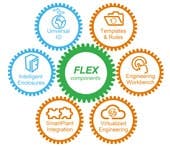Keith Larson is group publisher responsible for Putman Media'smanufacturing automation titles Control, Control Design and Smart Industry. Corporately, he also serves as vice president of content across Putman Media's other magazine titles.The low price of oil over the past two years has only reinforced the need for the process industries to execute projects differently, said Gary Freburger, president of Schneider Electric’s Process Automation business, at a media briefing this week at the Schneider Electric CONNECT 2016 user group meeting in New Orleans.
“Industry is headed down a path, and that’s not going to change even if oil prices rise,” Freburger said.
Indeed, while automation typically represents only 2-5% of the total investment required in a given capital project, analysts estimate that automation has historically accounted for some 30% of project risk. Because automation system design is dictated by process design, automation work typically begins only after the process design work is substantially complete. Those inevitable late changes in process design cascade through a partially completed automation system design, necessitating costly and time-consuming rework, and confounding attempts to get ahead. As a result, automation often remains stubbornly on the critical path to project completion.
Schneider Electric’s FLEX methodology—which encompasses a range of tools, technologies and processes for project execution—is intended to reduce schedule risk as well as overall project costs.
Key technology elements of FLEX include Schneider Electric’s Intelligent Marshalling configurable input/output (I/O) solution together with virtualization, reusable libraries of control system functionality, integration with SmartPlant Instrumentation design software, and a cloud-based engineering environment that allows personnel from around the world to collaborate on automation projects.
“Customers have told us they need to take 30-50% of engineering costs out of their projects,” added Chris Lyden, senior vice president of strategy and offer management, Schneider Electric. And while companies once might have relied on low-cost engineering centers around the globe to contain costs, rising wages have made that approach untenable. “We have to knock man-hours out,” Lyden said. And that has meant automating tasks such as configuration and commissioning wherever possible, reducing chances of error as well as overall effort and expense.One labor-saving enhancement to the company’s FLEX methodology on display at this week’s CONNECT 2016 event is the integration of Intergraph’s SmartPlant Instrumentation (SPI) tool, commonly used by engineering firms during detailed design and engineering work, with Schneider Electric’s Engineering Workbench, used to configure the company’s process automation systems.
Design data is extracted from the SPI database and used to automatically generate control code on the fly, explained Stephen Gray, director, global engineering management, Schneider Electric. “Our Engineering Workbench environment binds together pre-validated templates, rules and SPI data to automatically produce consistent control and safety configurations, cabinet documentation and instrument loop diagrams,” Gray said.
“Further, the integration goes both ways,” Gray said. “We bring validation and change management to client data.” Then, if additional changes are made to the process design, those changes are automatically propagated through the Engineering Workbench to the control system design. Control system code is always and automatically in synch with the designers’ latest thinking.
“Automating these processes allows engineers to focus on more complex tasks,” Gray said. “We want to take all that risk out of the equation.”









